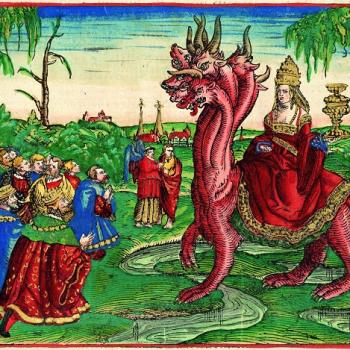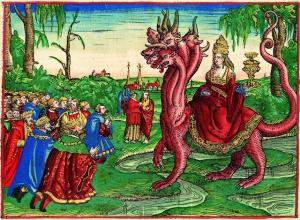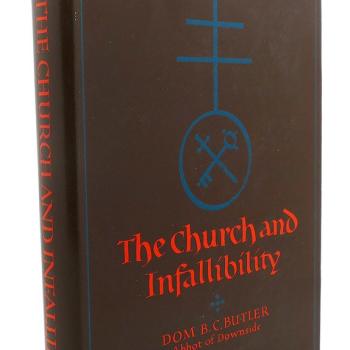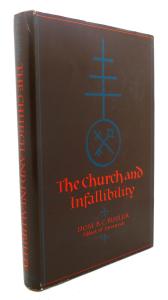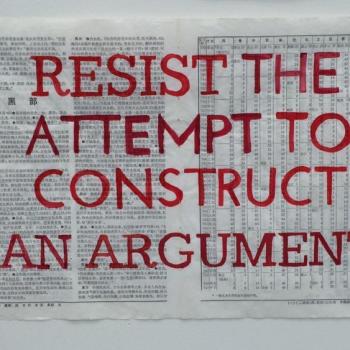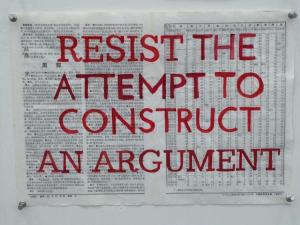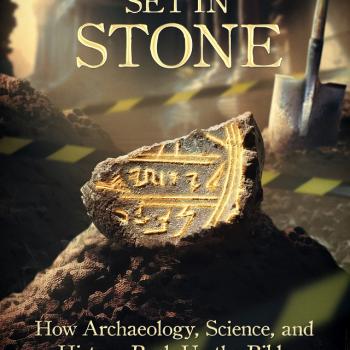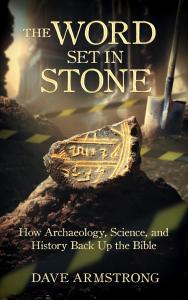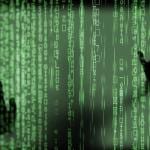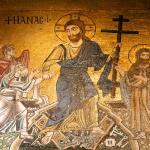Tradition & Authority; Bankruptcy of Sola Scriptura
The late Steve Hays (1959-2020) was a Calvinist (and anti-Catholic) apologist, who was very active on his blog, called Triablogue (now continued by Jason Engwer). His 695-page self-published book, Catholicism — a collection of articles from his site — has graciously been made available for free. On 9 September 2006, knowing full well my history of being condemned and vilified by other anti-Catholics (and his buddies) like James White, Eric Svendsen, and James Swan, Hays was quite — almost extraordinarily — charitable towards me. He wrote then:
I don’t think I’ve ever accused him of being a traitor or apostate or infidel. . . . I have nothing to say, one way or the other, regarding his state of grace. But his sincerity is unquestionable. I also don’t dislike him. . . . I don’t think there’s anything malicious about Armstrong—unlike some people who come to mind. In addition, I don’t think I’ve ever said he was unintelligent. For the record, it’s obvious that Armstrong has a quick, nimble mind. . . . The term “apostasy” carries with it a heavy presumption that the apostate is a hell-bound reprobate. I think it’s unwarranted to assume that all Catholics or converts to Catholicism are damned.
Two-and-a-half years later, starting in April 2009 and up through December 2011 (in the following quotations) his opinion radically changed, and he claimed that I have “an evil character,” am “actually evil,” “ego-maniac, narcissist,” “idolater,” “self-idolater,” “hack who pretends to be a professional apologist,” given to “chicanery,” one who doesn’t “do any real research,” “a stalwart enemy of the faith . . . no better than [the atheists] Richard Dawkins or Christopher Hitchens,” with an intent to “destroy faith in God’s word,” “schizophrenic,” “emotionally unhinged,” one who “doesn’t trust in the merit of Christ alone for salvation,” “has no peace of mind,” “a bipolar solipsist,” “split-personality,” and a “bad” man. He wasn’t one to mince words! See more gory details.
I feel no need whatsoever to reciprocate these silly and sinful insults. I just wanted the record to be known. I’ve always maintained that Hays was a very intelligent man, but habitually a sophist in methodology; sincere and well-meaning, but tragically and systematically wrong and misguided regarding Catholicism. That’s what I’m addressing, not the state of his heart and soul (let alone his eternal destiny). It’s a theological discussion. This is one of many planned critiques of his book (see my reasons why I decided to do this). Rather than list them all here, interested readers are directed to the “Steve Hays” section of my Anti-Catholicism web page, where they will all be listed. My Bible citations are from the RSV. Steve’s words will be in blue.
*****
[Chapter 2: Exposition]
Catholicism in the dock
The claim that critics of Catholicism can’t avoid referencing a tradition of their own is at odds with the common assertion that Protestants are guilty of proposing theological innovations. But a theological position can’t be simultaneously traditional and innovative. [p. 67]
Here Hays confuses “traditions of men”: which can start up at any time (i.e., be “new traditions”) and apostolic, patristic tradition, continuing through apostolic succession from 2000 years ago. Everyone has traditions of some sort. They are either openly acknowledged (that’s what Catholics do), utilized without knowledge and self-awareness that one is doing it (many Protestants who pretend that they just “go by the Bible,” etc.) or openly acknowledged, but erroneous (Protestant traditions that are false, or heretical / schismatic worldviews).
There’s a first time for everything. It’s quite possible for a theologian to make a break with the past. [p. 68]
Of course it is. But if it goes contrary to apostolic tradition or the Bible or magisterial Church teaching, it ought to be rejected. This is one of the major functions of the One True Church.
The question is whether tradition is regarded as intrinsically authoritative and unquestionable. Tradition as an argument from ecclesiastical authority, that isn’t subject to review. [p. 68]
Authoritative tradition is determined by a combination of serious historical analysis of Christian history and biblical teaching. When that is done, we maintain that Catholicism wins, hands-down, as the Guardian of apostolic tradition.
That’s quite different from tradition as an interpretation of Scripture that appeals to reason and evidence rather than authority. [p. 68]
It need not be a dichotomy. Catholic authority is built upon reason, evidence, and the Bible.
There are traditional interpretations in the sense of a tradition that starts out as an interpretation of Scripture, then becomes traditional, and something that starts out as a tradition, then casts about for prooftexts to retroactively validate a tradition that developed independently of Scripture. [p. 68]
Yes, the latter is an accurate description of both sola Scriptura and sola fide.
In addition, some traditional interpretations become dogma. The tradition is frozen in place and becomes the foundation for a theological skyscraper. But that’s different from a traditional interpretation that remains subject to scrutiny. Traditional interpretations that must prove themselves to each new Christian generation. Traditions that are responsive to logic and evidence. [p. 68]
Protestants have their own traditions, even of this sort, too. Does someone want to doubt that? Okay: go to a Calvinist and deny the five tenets of Calvinism (“TULIP”). See how far that gets you. See if that entrenched 500-year-old theological tradition is “subject to scrutiny” and “responsive to logic and evidence.” So it works out exactly the same way. All Christians have “non-negotiable” elements. And it has to be that way because Christianity is a religious belief-system. Some things in any Christian system are regarded as unquestionably true. It’s only a matter of degree and which beliefs are placed in this category. But for Hays to act as if only Catholics have dogmas which no one can question is, at best, ultra-naive and blind to reality, and at worst, equivocation and sophistry.
Divine guidance is not continuous but occasional and unpredictable. There’s no oracle that answers all our questions. [p. 69]
It surely is continuous in some sense:
Matthew 28:20 . . . I am with you always, to the close of the age.
John 14:26 But the Counselor, the Holy Spirit, whom the Father will send in my name, he will teach you all things, and bring to your remembrance all that I have said to you.
John 16:13 When the Spirit of truth comes, he will guide you into all the truth . . .
Acts 15:28 For it has seemed good to the Holy Spirit and to us to lay upon you no greater burden than these necessary things:
Acts 16:3-4 Paul wanted Timothy to accompany him; . . . [4] As they went on their way through the cities, they delivered to them for observance the decisions which had been reached by the apostles and elders who were at Jerusalem.
1 Corinthians 11:2 . . . maintain the traditions even as I have delivered them to you.
2 Thessalonians 2:15 So then, brethren, stand firm and hold to the traditions which you were taught by us, either by word of mouth or by letter.
1 Timothy 3:15 . . . the household of God, which is the church of the living God, the pillar and bulwark of the truth.
Catholic apologists and theologians say the church is subordinate to Scripture rather than above it, but if, according to them, the Magisterium is the arbiter of what Scripture means, then Scripture means whatever the Magisterium says it means. So that puts the Magisterium above Scripture. Scripture can never act as an independent check on the Magisterium if the Magisterium is the definitive interpreter. [pp. 69-70]
What we say is that Church teaching, tradition, and Scripture are always harmonious in fact. They are a “three-legged stool” and it makes no sense to try to place one above the other (all three “legs” have to be the same length or else the stool is unstable and falls). Scripture is indeed unique in that it is God-breathed in a way that Church teaching and tradition are not; yet it still has to be interpreted. We believe that God set up a guiding, teaching Church, led by the Holy Spirit, that is led to infallibly teach, so that believers are not led astray into heresy and other false beliefs and doctrines. Infallibility is a gift from God, to preserve and protect His Church, which in fact provides true interpretations of the inspired, infallible, inerrant revelation of Holy Scripture.
Moreover, in Jn 14-16, Jesus didn’t promise the Spirit to “the Church”, much less the pope or the Roman Magisterium, but to the Eleven. This is a classic example of how Catholics read out of Scripture what they first read into Scripture. [p. 70]
They represent the Church, as its prototypes. When they got together as part of this Church in the council of Jerusalem (“The apostles and the elders were gathered together to consider this matter”: Acts 15:6), they showed that they were now leaders in the Church, not just atomistic individuals (which is the false Protestant tendency). The Holy Spirit then led these “apostles and [non-apostle] elders” (“it has seemed good to the Holy Spirit and to us”: Acts 15:28) to make an authoritative pronouncement, binding on believers throughout Asia Minor (Turkey). Paul himself “delivered to them for observance the decisions which had been reached by the apostles and elders who were at Jerusalem” (Acts 16:4).
That is the Spirit guiding the Church; it’s infallible, Spirit-led authority, in a way that is contrary to the fundamental principle of authority and rule of faith of Protestantism: sola Scriptura, which holds that no authority is infallible except Scripture; therefore, it follows the Jerusalem council could not have been, and we must deny that the Holy Spirit led it, as inspired Scripture states (Acts 15:28). The Church infallibly leads us to theological and spiritual truth because Paul told us so in inspired Scripture, in calling it “the pillar and bulwark of the truth” (1 Tim 3:15).
Catholic appeal to Scripture is circular inasmuch as Scripture is only allowed to mean whatever meaning the Magisterium assigns to Scripture. [p. 70]
As explained, God sees to it that the two are in fact one and the same. It’s not circular if there is an equivalence, brought about by God’s supernatural guidance and protection.
But in that event, how do they establish the authority of the Magisterium in the first place? [p. 70]
From biblical teachings, which I have been outlining, and Jesus’ commission to Peter, and his primacy, as seen in Holy Scripture. And from examining Church history to see which Christian body or institution has avoided officially promulgated heresy these two thousand years. Only one has.
To begin with, suppose our interpretations do fall short of certainty? But unless all interpretations are equally uncertain, why is that a problem? [p. 70]
Merely human ones, collectively, always do fall short and contradict each other. That’s precisely why supernatural guidance and an infallible teaching Church was a absolute necessity. Once Protestants rejected an infallible teaching Church and tradition, it doomed itself to chaos and theological relativism, and that’s exactly what their history of many thousands of competing denominations demonstrates.
Why can’t Protestant epistemology appeal to “supernatural faith”? [p. 70]
It can in areas where it agrees with us. It can’t in the usual instances where there is endless internal contradiction, because that is the logically necessary presence of error and falsehood, which cannot be a good thing. And it can’t in the case of late-arriving theological novelties like sola Scriptura and sola fide. If these were such bedrock truths, God would have seen to it that the Church taught them all along,. But it didn’t. So they are immediately suspect on that basis alone, along with others.
So long as Christians are heavenbound, why is hermeneutical certitude required? [p. 71]
Because God desires it, as shown in Paul’s constant insistence upon it. I don’t see anywhere indicated in Holy Scripture that only some can know the whole truth of Christian doctrine, or that no one can, or that there are competing schools that contradict each other, rather than one unified Church, or that doctrinal dissensions and disagreements are to be expected and tolerated, let alone praised and glorified as open-mindedness or the status quo, etc. Jesus and the Bible writers (St. John and St. Paul above all) all assume that there is one truth (“the truth”), one tradition, one doctrine: that can be known with God’s help, and the Church’s guidance:
Luke 1:4 that you may know the truth concerning the things of which you have been informed.
John 1:17 For the law was given through Moses; grace and truth came through Jesus Christ.
John 4:23 But the hour is coming, and now is, when the true worshipers will worship the Father in spirit and truth, for such the Father seeks to worship him. (cf. 8:31-32)
John 15:26 But when the Counselor comes, whom I shall send to you from the Father, even the Spirit of truth, who proceeds from the Father, he will bear witness to me; (cf. 14:6; 16:13; 17:17-19)
John 18:37 . . . For this I was born, and for this I have come into the world, to bear witness to the truth. Every one who is of the truth hears my voice.”
John 19:35 He who saw it has borne witness — his testimony is true, and he knows that he tells the truth — that you also may believe.
Romans 9:1 I am speaking the truth in Christ, I am not lying; my conscience bears me witness in the Holy Spirit,
1 Corinthians 2:13 And we impart this in words not taught by human wisdom but taught by the Spirit, interpreting spiritual truths to those who possess the Spirit. (cf. 2 Cor 13:8)
Galatians 5:7 You were running well; who hindered you from obeying the truth?
Ephesians 1:13 In him you also, who have heard the word of truth, the gospel of your salvation, and have believed in him, were sealed with the promised Holy Spirit,
Ephesians 4:25 Therefore, putting away falsehood, let every one speak the truth with his neighbor, for we are members one of another.
Ephesians 5:9 (for the fruit of light is found in all that is good and right and true), (cf. 6:14)
Philippians 4:8 Finally, brethren, whatever is true, whatever is honorable, whatever is just, whatever is pure, whatever is lovely, whatever is gracious, if there is any excellence, if there is anything worthy of praise, think about these things.
Colossians 1:3-10 We always thank God, the Father of our Lord Jesus Christ, when we pray for you, because we have heard of your faith in Christ Jesus and of the love which you have for all the saints, because of the hope laid up for you in heaven. Of this you have heard before in the word of the truth, the gospel which has come to you, as indeed in the whole world it is bearing fruit and growing — so among yourselves, from the day you heard and understood the grace of God in truth, as you learned it from Ep’aphras our beloved fellow servant. He is a faithful minister of Christ on our behalf and has made known to us your love in the Spirit. And so, from the day we heard of it, we have not ceased to pray for you, asking that you may be filled with the knowledge of his will in all spiritual wisdom and understanding, to lead a life worthy of the Lord, fully pleasing to him, bearing fruit in every good work and increasing in the knowledge of God.
1 Timothy 2:4 who desires all men to be saved and to come to the knowledge of the truth.
1 Timothy 3:15 if I am delayed, you may know how one ought to behave in the household of God, which is the church of the living God, the pillar and bulwark of the truth.
1 Timothy 4:3 . . . those who believe and know the truth.
2 Timothy 2:25 God may perhaps grant that they will repent and come to know the truth, (cf. 1:14; 3:7-8)
2 Timothy 4:4 and will turn away from listening to the truth and wander into myths.
Titus 1:1 Paul, a servant of God and an apostle of Jesus Christ, to further the faith of God’s elect and their knowledge of the truth which accords with godliness,
Titus 1:14 instead of giving heed to Jewish myths or to commands of men who reject the truth.
Hebrews 10:26 . . . the knowledge of the truth, . . .
James 5:19 My brethren, if any one among you wanders from the truth and some one brings him back,
2 Peter 1:12 Therefore I intend always to remind you of these things, though you know them and are established in the truth that you have. (cf. 1 Pet 1:22)
1 John 2:27 but the anointing which you received from him abides in you, and you have no need that any one should teach you; as his anointing teaches you about everything, and is true, and is no lie, just as it has taught you, abide in him. (cf. 2:21)
1 John 3:19 By this we shall know that we are of the truth, and reassure our hearts before him. (cf. 4:6)
1 John 5:7 And the Spirit is the witness, because the Spirit is the truth.
2 John 1:1-2 The elder to the elect lady and her children, whom I love in the truth, and not only I but also all who know the truth, because of the truth which abides in us and will be with us for ever:
3 John 1:3-4 For I greatly rejoiced when some of the brethren arrived and testified to the truth of your life, as indeed you do follow the truth. No greater joy can I have than this, to hear that my children follow the truth.
3 John 1:12 Deme’trius has testimony from every one, and from the truth itself; I testify to him too, and you know my testimony is true.
Related Reading:
Bible vs. Denominationalism and Against “Primary / Secondary” Doctrines [8-18-06]
“Reply to Calvin” #4: “Primary” & “Secondary” Doctrines [4-3-17]
Although the Spirit is given to the apostles at Pentecost, that’s inclusive rather than exclusive to the apostles. The Spirit is given to Christians in general, including revelatory dreams and visions (Acts 2:16-17). Throughout the Book of Acts, the gift of the Spirit is common property of Christian converts, including supernatural phenomena. [p. 71]
Yes, the Bible plainly teaches that the Holy Spirit indwells all Christian believers.
There’s no clerical/lay dichotomy in that regard. [p. 71]
There was at the Jerusalem council, because it declared an infallible decision, led by the Holy Spirit, as shown above (which is blatantly contrary to sola Scriptura; indeed, fatal to it). Only apostles and popes have that sort of infallibility on their own, as individuals and that’s still the “clerical/lay dichotomy” because apostles and popes are on a much higher level than us run-of-the-mill laity.
A basic problem is that modern Catholicism tries to combine two divergent paradigms. The deposit of faith represents the traditional paradigm. That’s fixed. Complete. But modern Catholicism has added the theory of development. That leads to special pleading, where theological innovations are reclassified as theological developments. [p. 71]
It’s not a “basic problem” for us at all. It is in Hays’ deficient understanding of what development is in the first place. Development is completely consistent with one tradition progressively unfolding and being better understood over time. Development of doctrine is not evolution of doctrine. It’s not “amoeba to dinosaur” (fundamental change); it’s “acorn to oak” (essential continuity — with growth — of the same thing).
It’s demonstrably false that throughout the NT, Peter is the central authority, the primary teacher on whom all others depend for final rulings in church governance. For the first few chapters in Acts, Peter takes the lead. After that, others like Stephen and Philip step in. Then Peter is eclipsed by Paul, because Paul is more talented than Peter.
The NT has two letters attributed to Peter. In mainstream Catholic scholarship, sanctioned by the Magisterium, Petrine authorship is denied. Most of the NT was composed by writers other than Peter. The Book of Acts contains some Petrine speeches, but mainstream Catholic scholarship regards the speeches in Acts as fictional. My point is not to agree with that but to respond to modern Catholicism on its own terms. And even if we take a more conservative position, the dominant and predominant NT teaching is from teachers other than Peter. [p. 72]
This is the good old “pitting Paul against Peter” failed Protestant attempt. I’ve addressed it many times:
50 New Testament Proofs for Petrine Primacy & the Papacy [1994]
Primacy of St. Peter Verified by Protestant Scholars [1994]
Reply to Critique of “50 NT Proofs for the Papacy” (vs. Jason Engwer) [3-14-02]
Refutation of a Satirical “Pauline Papacy” Argument (vs. Jason Engwer) [9-30-03]
Papal Passages Lk 22:31-34 & Jn 21:15-17 (vs. Jason Engwer) [5-12-20]
Pope St. Clement of Rome & Papal Authority [7-28-21]
Reply to Lucas Banzoli’s 205 Potshots at St. Peter, Part I (+ Pt. 2. / Pt. 3 / Pt. 4) [5-26-22]
Defending 20 Biblical Proofs for the Papacy (vs. Lucas Banzoli) [+ Part II] [2-13-23]
Reply to Rodrigo Silva on NT Evidences for the Papacy [2-27-23]
Did You Know That St. Peter is Mentioned More Than St. Paul in the New Testament? I Didn’t Till Today [Facebook, 2-27-23]
Reply to Steve Hays’ Caricatures of the Papacy [2-28-23]
***
Practical Matters: Perhaps some of my 4,200+ free online articles (the most comprehensive “one-stop” Catholic apologetics site) or fifty-one books have helped you (by God’s grace) to decide to become Catholic or to return to the Church, or better understand some doctrines and why we believe them.
Or you may believe my work is worthy to support for the purpose of apologetics and evangelism in general. If so, please seriously consider a much-needed financial contribution. I’m always in need of more funds: especially monthly support. “The laborer is worthy of his wages” (1 Tim 5:18, NKJV). 1 December 2021 was my 20th anniversary as a full-time Catholic apologist, and February 2022 marked the 25th anniversary of my blog.
PayPal donations are the easiest: just send to my email address: apologistdave@gmail.com. You’ll see the term “Catholic Used Book Service”, which is my old side-business. To learn about the different methods of contributing, including 100% tax deduction, etc., see my page: About Catholic Apologist Dave Armstrong / Donation Information. Thanks a million from the bottom of my heart!
***
Photo credit: The Whore of Babylon (workshop of Lucas Cranach): colorized illustration from Martin Luther’s 1534 translation of the Bible [public domain / Wikimedia Commons]
***
Summary: The late Steve Hays was a Calvinist and anti-Catholic writer and apologist. This is one of my many critiques of Hays’ “Catholicism”: a 695-page self-published volume.


